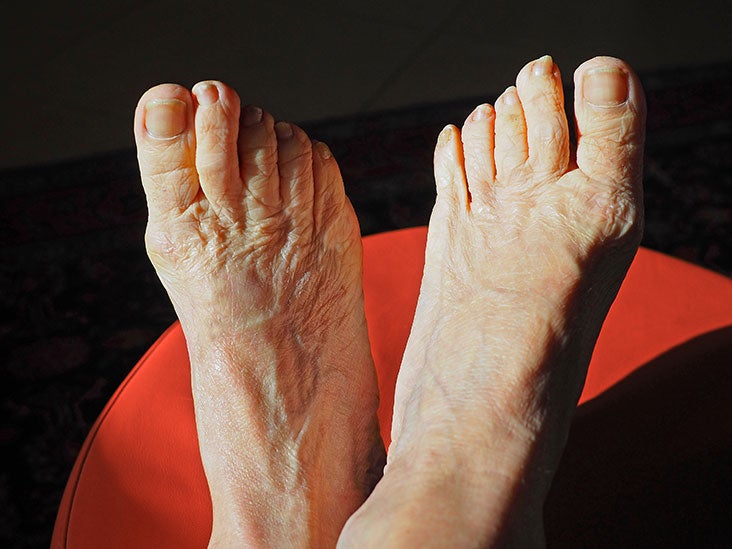Best medication for nail fungus: Types and benefits - Medical News Today

Nail fungus infections are common and preventable health conditions. Oral and topical antifungals are the two main treatment methods. Oral antifungals are usually the more effective.
Some funguses can infect people's nails, causing changes to their color and texture.
This article examines the best treatment options for nail fungus infections. After discussing oral and topical antifungals, we consider alternative treatments, home remedies, and prevention.
A
These medications focus on invading funguses. Oral antifungals are usually much more effective than topical antifungals.
Several antifungals for nail fungus currently have Food and Drug Administration (FDA) approval. These include:
- terbinafine
- itraconazole
- tavaborole
- efinaconazole
- ciclopirox
- griseofulvin
Each medication has different:
- dosages
- precautions
- side effects
Research measures the efficacy of antifungal drugs by a complete cure of 48 weeks.
Terbinafine is an oral antifungal. It has a
Dosage, frequency, and duration
A
For people with fingernail infections, terbinafine treatment takes 6 weeks. For toenail infections, the treatment lasts 12 weeks. In all cases, the individual must take one 250 milligrams (mg) tablet daily.
Read more about nail fungal infections.
Precautions
Scientists do not recommend terbinafine to certain individuals. These include people:
Potential side effects
Side effects of terbinafine may include the following:
Itraconazole is another oral antifungal with a
Dosage, frequency, and duration
A
Precautions
Doctors do not recommend itraconazole to certain individuals. These include people:
- with heart failure
- with liver disease or liver failure
- who are pregnant
Potential side effects
Side effects of itraconazole may include the following:
Tavaborole is a topical antifungal with a complete cure rate of
Scientists develop 5% tavaborole topical solutions with tavaborole as the active ingredient.
Dosage, frequency, and duration
In
Precautions
Overall, it is uncertain whether some people should not take tavaborole.
Potential side effects
Tavaborole does have some potential side effects, which can temporarily impact the area around the nail. Researchers list these as follows:
Efinaconazole is another topical antifungal. Its complete cure rate may be as high as
As a
Dosage, frequency, and duration
An individual must apply efinaconazole 10% topical solution to any affected nails daily.
Precautions
Experts have not yet found sufficient evidence that efinaconazole 10% topical solution is unsafe for certain people.
Potential side effects
The following side effects may occur with efinaconazole treatment:
Ciclopirox is a different topical antifungal, and its complete cure rate may reach
A
Dosage, frequency, and duration
Once per day, individuals can apply a special ciclopirox 8% nail lacquer to any affected nails. Treatment can last for 48 weeks.
Precautions
The article does not mention any specific precautions for using topical ciclopirox. The drug appears to be safe, with no recorded serious adverse effects.
Potential side effects
Some people who use topical ciclopirox may experience mild and temporary side effects. These include:
Griseofulvin treats fungal infections of the:
- scalp
- fingernails
- toenails
Doctors administer griseofulvin orally for fungal infections. This drug enables newly formed skin and nail keratin —the protein that makes up the tissue— to resist fungal attacks. As the new keratin grows, the nail sheds the old infected keratin.
However,
Dosage, frequency, and duration
The oral tablet contains 500 mg of active griseofulvin.
An adult should take 1,000 mg 1–4 times daily. The usual duration is 4 months for fingernails and 6 months for toenails.
The dosage for children of any age is 10 mg per kilogram of body weight per day.
Doctors will recommend continued treatment for at least 2 weeks after all signs of infection have cleared.
Precautions
Before a person starts taking this medication, doctors must identify the type of fungus.
Medical professionals do not usually prescribe griseofulvin to treat minor infections that respond to topical therapy.
Doctors do not recommend griseofulvin if a person has:
- have hypersensitivity to griseofulvin or any of the ingredients
- have porphyria, a rare metabolic disorder that can affect the skin
- have severe liver — hepatic — impairment
- have systemic lupus erythematosus, a chronic autoimmune disease causing skin and joint inflammation
- are pregnant or nursing
People with moderate to mild hepatic impairment do not need their dosage adjusted. However, griseofulvin may lead to further impairment of hepatic function. Therefore, doctors will regularly monitor a person's liver.
Potential side effects
Griseofulvin may cause more side effects than the other treatments for nail fungus.
Potential side effects include:
Oral and topical antifungals are the primary treatment option for nail fungal infections.
However, scientists continue to develop other treatment options, which do not always involve taking medication.
For instance,
In some cases, it may be helpful to surgically remove some of the affected nails. This can help topical treatments reach the fungus. In severe cases, it may also be helpful to completely remove the affected nail.
There is evidence that certain natural topical ointments could help with nail fungus infections. These ointments contain vitamin E and essential oils of:
At present, no reliable and recent scientific evidence suggests that home remedies can effectively treat nail fungal infections.
It may be impossible to eliminate the risk of nail fungal infections.
However, there are many ways in which people can
- wearing non-occlusive or open shoes, such as sandals
- using absorbent socks to absorb fluids
- clipping nails short
- keeping feet dry and cold, as funguses prefer warm and damp conditions
There are several symptoms of nail fungal infections. A
Anyone with these symptoms may wish to seek a doctor's advice.
Scientists have developed several treatment options for fungal nail infections.
Oral antifungals tend to be more effective than topical treatments.
However, oral antifungals also tend to have more severe side effects, which can make them inappropriate for some people, including those who are pregnant or have liver disease.
Comments
Post a Comment